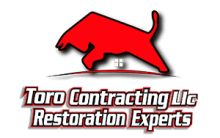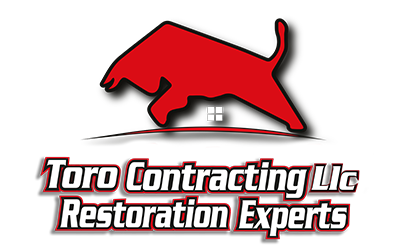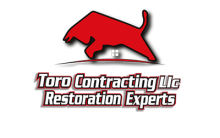Water damage is considered storm damage when it results directly from external weather events like hurricanes or heavy rainfall, not internal issues like burst pipes. You’ll need evidence connecting the damage to a documented storm, such as timing proximity, wind-driven rain entry, multiple water intrusion points, or debris presence. Insurance companies distinguish between these categories because they typically offer different coverage terms, deductibles, and claim processes. Understanding these distinctions helps you navigate your insurance claim more effectively.
Key Takeaways
- Water damage is classified as storm damage when directly caused by external weather events like hurricanes, tornadoes, or severe storms.
- Timing proximity to documented weather events is a critical indicator of storm-related water damage.
- Multiple-point water entry patterns and neighborhood-wide impact suggest storm damage rather than regular water leaks.
- Wind-driven rain entering through structural damage caused by storms qualifies as storm damage for insurance purposes.
- The presence of external debris like leaves and branches in water-damaged areas strengthens storm damage classification.
Defining Storm Damage vs. Regular Water Damage
Although both result in moisture-related destruction, storm damage and regular water damage differ significantly in their causes, insurance coverage implications, and remediation approaches. Storm damage occurs when external weather events—hurricanes, tornadoes, blizzards, or severe thunderstorms—directly impact your property. This typically involves forceful water entry through compromised structural elements.
Regular water damage, conversely, stems from internal sources like burst pipes, appliance failures, or plumbing issues. During damage assessment, insurers evaluate whether water infiltration resulted from storm impact or maintenance-related failures. This distinction critically affects your coverage eligibility, as many policies separate these categories with different deductibles and coverage limits. Understanding this classification helps you navigate claims processes effectively and anticipate potential out-of-pocket expenses when water damages your property.
Key Indicators That Water Damage Qualifies as Storm-Related
When determining if water damage falls under storm-related coverage, several distinct indicators help establish the classification. You’ll need to evaluate timing proximity to documented weather events, noting water intrusion that coincides directly with storms. Evidence of external forces like wind-driven rain entering through damaged windows, doors, or roof components serves as a critical storm damage indicator.
During your water damage assessment, look for multiple-point entry patterns that aren’t typical of plumbing failures. The presence of debris, leaves, or branches accompanying water suggests storm origin. Additionally, examine neighborhood-wide impact patterns—when surrounding properties experience similar damage following the same weather event, this strengthens your claim’s storm classification. Insurance adjusters typically check weather reports to verify storm conditions existed when the damage occurred.
Insurance Policy Coverage Differences for Storm Damage
Insurance policies typically distinguish between water damage and storm damage through specific coverage provisions that significantly impact claim outcomes. Understanding these distinctions is essential for maximizing your claim potential.
| Coverage Type | Water Damage | Storm Damage |
|---|---|---|
| Deductible | Often higher | May be lower percentage-based |
| Exclusions | Gradual leaks, maintenance issues | Typically fewer exclusions |
| Coverage Limits | Generally lower sublimits | Often higher coverage limits |
When initiating your claim process, identify the precise cause of damage, as insurers classify incidents based on origin rather than resulting damage. Many policies exclude flooding but cover rain entering through storm-created openings. Review your insurance policy’s endorsements for additional storm protection options that might extend coverage beyond standard provisions. Policies may also have waiting periods before storm coverage activates, requiring advance planning for adequate protection.
Common Types of Storm-Induced Water Damage
Numerous storm events can create distinctive water damage patterns that require specific restoration approaches. When evaluating storm impact, you’ll need to identify the primary water sources and resulting damage patterns to determine appropriate remediation strategies.
- Flash flooding that breaches foundations, causing basement saturation and structural undermining
- Wind-driven rain penetrating through damaged roofs, windows, or siding, creating interior wall cavity moisture
- Rising water tables following prolonged precipitation that compromise foundation integrity
- Sewer backups resulting from overwhelmed municipal systems during heavy rainfall
- Ice dam formation causing meltwater to seep beneath shingles and into attic spaces
Understanding these specific damage types helps insurance adjusters accurately classify claims and enables restoration professionals to implement targeted drying protocols and structural repairs appropriate to each water intrusion scenario.
Documentation Requirements for Storm Damage Claims
Thorough documentation forms the cornerstone of successful storm damage claims, serving as critical evidence for insurance providers during their assessment process. Your claim documentation should include dated photographs capturing all damaged areas from multiple angles, accompanied by detailed written descriptions of each affected item or structure.
Evidence collection must begin immediately after ensuring safety. Create a comprehensive inventory of damaged possessions, noting their approximate value, age, and condition. Retain all receipts for emergency repairs and temporary accommodations. Weather reports confirming storm occurrence in your area strengthen your case substantially.
Document all communications with insurance representatives, including names, dates, and conversation summaries. Professional assessment reports from licensed contractors provide credible verification of damage extent and repair costs, enhancing your claim’s legitimacy when submitted to your insurer.
The Timeline Factor: Sudden vs. Progressive Damage
Insurance companies distinguish between sudden storm damage and progressive water damage when processing your claim. You’ll need to understand how the timeline of damage occurrence affects coverage decisions, as instantaneous destruction from a storm typically receives different treatment than gradual deterioration from ongoing leaks. The duration of water exposure directly impacts claim classification, with sudden events generally falling under storm damage and long-term exposure categorized as maintenance issues often excluded from standard coverage.
Immediate Versus Ongoing Effects
While both water and storm damage occur through natural events, they manifest through distinctly different timelines that affect both assessment and remediation approaches. Storm damage typically demands immediate response while water damage often requires ongoing evaluation of progressive deterioration.
- Storm damage presents visible structural impacts requiring rapid assessment
- Water intrusion may remain hidden within walls or under flooring for weeks
- Storm effects often stabilize after the event, allowing for definitive repair scopes
- Water damage continues to spread and worsen without intervention
- Moisture-related secondary damages (mold, rot) develop gradually over time
Understanding these temporal differences helps insurance adjusters categorize claims appropriately and assists property owners in documenting when damage occurred—a critical factor in coverage determination and remediation planning.
Duration Determines Classification
Classification of water and storm damage often hinges on the duration of the event, creating a significant distinction between sudden and progressive damage patterns. Your insurance provider will typically categorize sudden, weather-related flooding as storm damage, while slow leaks or gradual water intrusion fall under standard water damage classification criteria.
When you document the incident, timing becomes essential. Storm damage claims require evidence of a specific weather event that caused immediate destruction. Conversely, progressive water damage that develops over weeks or months follows different coverage parameters.
The duration impact directly affects your claim process and potential compensation. You’ll need to demonstrate precisely when the damage occurred, as insurers apply distinct evaluation metrics for each classification. Understanding this timeline differentiation guarantees you file under the appropriate coverage category and meet the necessary documentation requirements.

Professional Assessment: When to Call in the Experts
Although you might be tempted to handle water damage assessment yourself, certain scenarios necessitate professional expertise. A thorough professional evaluation eliminates guesswork and provides documentation essential for insurance claims. Damage assessment specialists can distinguish between storm and water damage based on established industry criteria.
Call experts immediately when facing:
- Structural concerns like sagging ceilings or warped floors
- Water intrusion affecting electrical systems
- Contaminated water (sewage or flood water)
- Visible mold growth or persistent musty odors
- Water damage extending across multiple rooms or floors
Professionals employ moisture meters, thermal imaging cameras, and other specialized equipment to detect hidden water damage within walls and under flooring—areas you can’t effectively evaluate without proper tools. Their assessment creates a vital foundation for proper remediation and claim processing.
Steps to Take Immediately After Storm Water Infiltration
After storm water infiltrates your property, immediate and decisive action can significantly minimize damage and prevent secondary issues like mold growth. First, guarantee your safety by shutting off electricity if water contacts electrical systems. Document all damage with photographs for insurance purposes before beginning mitigation.
Remove standing water using pumps or wet vacuums, then accelerate drying with dehumidifiers and fans. Salvage valuable items by moving them to dry areas. Discard porous materials that cannot be properly sanitized.
Your storm preparedness should include having emergency response supplies ready: plastic sheeting, sandbags, and battery-operated pumps. Contact your insurance provider within 24-48 hours to initiate your claim, and consult restoration professionals if water has penetrated structural components or if the affected area exceeds 10 square feet.
Preventing Future Storm Water Damage to Your Home
To prevent future storm water damage, you’ll need to implement a comprehensive maintenance strategy focused on three critical areas. Regular gutter cleaning and repair prevents overflow that can compromise your foundation during heavy rainfall. Strategic landscape grading and proper placement of downspout extensions will redirect water away from your home’s perimeter, while conducting routine inspections of your home’s exterior can identify vulnerable points before they fail during severe weather events.
Proper Gutter Maintenance
Why do gutters play such a critical role in protecting your home from water damage? Properly functioning gutters direct rainwater away from your foundation, preventing moisture infiltration that can lead to structural deterioration and mold growth. Regular gutter cleaning and downspout maintenance are vital preventive measures.
- Clean gutters at least twice annually (spring and fall) to remove leaves, twigs, and debris that cause blockages
- Inspect downspouts for proper alignment and secure attachments to guarantee water flows away from your foundation
- Install gutter guards to minimize debris accumulation while maintaining proper water flow
- Check for sagging sections that may indicate damaged hangers or fascia boards
- Extend downspouts at least 5-10 feet from your foundation to prevent water pooling near structural elements
These maintenance protocols significantly reduce your vulnerability to water intrusion during severe weather events.
Landscape Water Diversion
Several landscape modifications can significantly reduce water damage risks during storms. Proper landscape grading guarantees water flows away from your foundation, maintaining a slope of at least 1 inch per foot for the first 6-10 feet surrounding your home. This fundamental adjustment prevents pooling that threatens structural integrity.
Strategic drainage solutions offer additional protection when implemented correctly. French drains redirect subsurface water through perforated pipes surrounded by gravel. Dry wells collect runoff and allow gradual soil absorption, while swales—shallow, vegetated depressions—channel surface water away naturally.
For properties with persistent drainage issues, consider installing catch basins at low points. These collect excess water and direct it to safer discharge areas. Permeable hardscaping materials also reduce runoff by allowing water to percolate through rather than accumulate on surfaces.
Home Exterior Inspection
While landscape modifications address water movement around your property, regular home exterior inspections form the foundation of effective storm damage prevention. Implementing a comprehensive home exterior inspection checklist enables you to identify vulnerable areas before storms strike.
- Check roof for missing shingles, damaged flashing, or compromised seals that could allow water penetration
- Examine gutters and downspouts for blockages, rust, or separation from fascia boards
- Inspect window and door frames for deteriorating caulk, cracked weatherstripping, or warping that compromises waterproofing
- Assess foundation for cracks, settling, or deterioration that may channel water into basement or crawlspace
- Evaluate siding for loose panels, cracks, rot, or separation that could permit water intrusion
Document your findings methodically and address issues promptly, prioritizing repairs based on severity and potential for water damage during storm events.
Frequently Asked Questions
Does Homeowners Insurance Cover Mold Caused by Storm Water Damage?
Most homeowners insurance policies don’t automatically cover mold remediation caused by storm water damage. Coverage depends on your specific policy terms and how the mold developed. If mold results directly from a covered peril (like sudden storm damage), you might have limited coverage. However, insurers typically exclude mold resulting from gradual water problems or poor maintenance. You’ll need to act quickly after water damage and check your policy’s specific language regarding mold limitations.
Can I Claim Storm Damage if I Wasn’t Home During the Event?
Yes, you can file insurance claims for storm damage even if you weren’t home during the event. Your physical presence isn’t a requirement for legitimate storm damage claims. Document the damage thoroughly with photographs and notes once you return. Contact your insurance provider promptly to report the incident, as policies typically have specific timeframes for claim submission. Weather reports and neighbor statements can help substantiate that damage occurred during the specific storm event you’re claiming.
How Long After a Storm Can I File a Water Damage Claim?
While time stretches forward, claim filing windows close inexorably. You should file your water damage claim as soon as possible after discovering the damage. Most insurance policies require notification within 24-72 hours of discovery. However, storm timelines for claims typically extend 1-2 years from the event date, depending on your policy and state regulations. Document everything immediately—date-stamped photos, repair estimates, and weather reports strengthen your case considerably during the claims process.
Are Flood Zones Relevant for Storm Damage Coverage Determination?
Yes, flood zones are highly relevant for storm damage coverage determination. Your insurance policies typically consider these designated areas when evaluating risk and establishing coverage limitations. Standard homeowners policies often exclude flood damage, regardless of your property’s flood zone designation. If you’re in a high-risk flood zone, you’ll likely need separate flood insurance through the National Flood Insurance Program or private insurers to adequately protect against water damage from storms.
Will My Insurance Rates Increase After Filing a Storm Damage Claim?
Filing storm damage insurance claims may affect your rates, but multiple factors determine the impact. Your location, claim history, policy terms, and the insurer’s specific guidelines all influence potential increases. Some companies offer first-time claim forgiveness or storm-specific protections. Rate factors also include claim frequency and severity. For precise information about your situation, contact your insurance provider directly to understand how your specific policy handles storm-related claims.






